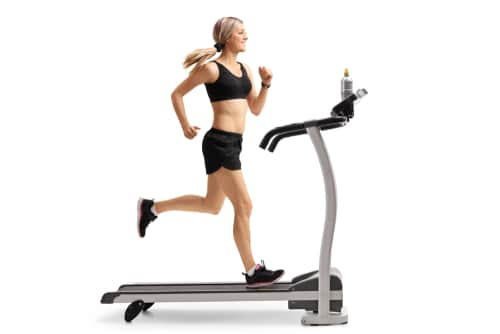Running can bring both joy and pain. Running keeps you fit, allows you to stay trim, works your body, and clears your mind. However, all this grinds to a halt when you get injured.
As a Senior Podiatrist in one of Singapore's largest Sport Medicine Departments, I often come across runners who hit a bump in their training due to a debilitating injury that they can never quite shake off.
Not many Singaporeans know this, but there's a right way to run, and a wrong way to run. Running the wrong way can cause you to sustain a running injury and slow you down, both physically and mentally.
Fret not, as I'll be sharing more on what you can do to prevent, and recover from a running injury.
However, let's first begin with a brief runthrough of the mechanics behind running…
The human body - a mechanical masterpiece for running, but…
Through time, humans have evolved to be able to run long distances.
Your body is brilliant in many ways, one of which is that it can store and reuse energy while running.
For example, your Achilles tendon can store up to 30% of the energy the calf muscle generates. This enables it to act like an elastic band, recoiling and shortening to help lift your heel off the ground as you run, which in turns allows you to run efficiently for long periods.
However, running is not risk-free. Studies have shown that the incidence of running injuries can be up to 78% over an 18-month period.
These running injuries are often multi-factorial and diverse. Common causative factors include:
- Older age
- Increased BMI
- Poor foot posture and footwear
- Increased training load
- Bad training surface
Thankfully, modern innovation has led to new and fascinating ways to manage and prevent injuries. These include:
- Strength and conditioning training
- Exercise programmes to improve neuromuscular control, and to improve flexibility
- Foot orthoses
- Footwear modification
Running retraining helps you to prevent and treat injuries

Altering your running technique is one intervention that may be used to treat running injuries. It works by reducing the load on certain muscle groups and joints.
Running retraining involves:
- Identifying any abnormal running patterns that lead to injury
- Establishing if your running mechanics can be altered
- Finding a sustainable method to change your running mechanics
In essence, this is similar to changing a golf swing or tennis stroke to reduce the load on certain painful areas of your body.
Running retraining works really well for individuals who have chronic and persistent running-related pain in spite of other interventions.
How we helped Mr SJ recover his running mojo
Some time ago, my colleague Dr Dinesh Sirisena wrote about a patient, Mr SJ, who we supported together to manage his shin splints. Shin splints are due to too much bone stress.
After the diagnostic MRI had been done to confirm the diagnosis of his shin splints, we further assessed Mr SJ and found that he had vitamin D deficiency.
Once Vitamin D levels were corrected, we began looking at providing Mr SJ with running retraining.
This was done to address any abnormal running patterns that were contributing to his persistent shin splints.
Assessing footage from Mr SJ's threadmill run

We instructed Mr SJ to run on a treadmill, while a video was recorded using a slow-motion camera.
This was followed up by assessment of the footage, before we were able to provide a detailed analysis of his running technique.
Here's what we observed in Mr SJ’s running gait:
- Over-stride. This is where one lands significantly ahead of one’s centre of mass
- Straight knee on landing
- Large displacement in his centre of mass (ie a “bouncy” gait)
- Low cadence (number of steps/min)
These factors are known to cause greater forces on the shin and lower limb, which contributes to injury.
In the process of running retraining, we looked to alter his running technique to reduce the load on his shin.
Starting anew
First, we looked at reducing the over-stride to prevent him from landing heavily with a straight leg.
A simple adjustment for this was “take shorter, faster strides” – a higher step rate at the same speed reduces stride length. This also helped to reduce his “bouncy” gait due to a higher step rate turnover.
Second, we also instructed him to engage his core and gluteal muscles while running as this helps to reduce his over-stride, and increases his cadence (number of steps/min).
While running retraining is one of the interventions used in managing shin splints, it must be noted that merely adjusting running gait may not be adequate in managing one’s condition.
Running retraining should always be based on individual assessment, as other factors may also be implicated. This includes:
- Muscle strength
- Control and flexibility
A strength and rehabilitation program is also often done concurrently.
(Also read: How To Get Rid Of Running Pain, According To A Sports Medicine Doctor)
If you're experiencing recurrent shin pain, running retraining could be the final piece of the jigsaw that is required for you to enjoy running again.
Boon Kiak is a Senior Podiatrist working at Khoo Teck Puat Hospital, where he is the clinical lead in podiatric sports medicine. He has a keen interest in the management of injuries across a wide spectrum of sports such as running, football, golf, triathlon etc, both at the elite and amateur level. As an ex-professional cyclist, he still enjoys riding his bike, albeit a lot slower than he used to! You can follow up at @fit_pod on for tips on everything to do with feet and sport.
